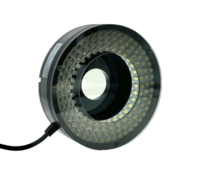Basics of polarization in diverse machine vision applications

The fundamentals of polarization are examined in this article along with its various applications in machine vision. It also emphasizes cross-polarization, a cutting-edge method that improves image quality by reducing glare and bringing out details that are otherwise hidden. Do you need advice on a similar application, having problems with glare, or are you working on an application that involves surface inspection? When choosing the appropriate polarization hardware, we can help.
The polarization concept in machine vision
Light waves are oriented in a particular direction by polarization. It provides machine vision systems with an innovative tool that allows data to be extracted from a scene that is invisible to traditional imaging techniques. Polarization-based methods are extremely useful for a wide range of scientific, industrial, and medical applications because they provide a fresh level of contrast and detail.
The electrical fields of external light sources, like the sun or LED lights, emit light waves with arbitrary orientations. Because the oscillations happen in every direction that is perpendicular to the direction of propagation, this is known as unpolarized light. Unpolarized light can become polarized when it travels through specific materials or filters. A polarizing filter, for instance, blocks light oscillating in other planes and only permits light waves oscillating in a particular plane (aligned with the filter's polarization axis) to pass through.
A surface's reflection can cause light to become partially polarized. The reflected light is polarized parallel to the surface at specific angles. These light-related characteristics can be used to enhance outcomes and make features visible in machine vision applications.
- Surface Inspection: Under normal lighting conditions, surface flaws such as scratches and imperfections may go undetected. However, polarization makes these things more visible.
- Glare Reduction: By reducing glare and reflections from glossy surfaces, polarization can improve the quality of images.
Possible polarization solutions for machine vision applications
In order to reduce glare in machine vision, polarized filters must be used on the lens and all external light sources.
Our linear polarizing filter sheet is a great option if you want to reduce reflections from outside light sources. After being cut to size, this filter sheet can be positioned in front of the machine vision light source. This sheet of polarizing filter is frequently used with bar lights.
You can use a linear polarizing filter, which comes in different sizes, for the lens. Take this Polarizing filter | Linear | M30.5, for instance. To achieve the best results, the filter's polarization direction can be adjusted by twisting it. The majority of the polarizing lens filters in our extensive inventory are active between 400 and 780 nm.
Do you require assistance choosing the ideal setup? For more details, continue reading or use the form below to get in touch.
Cross-polarization in machine vision
A pair of polarizers positioned at right angles to one another are used in the sophisticated polarization process known as cross-polarization. This configuration effectively blocks glare and specular reflections by allowing only light with polarization perpendicular to the second polarizer to pass through. Cross-polarization is used to:
- Reduce Glare: It reduces reflections, which increases contrast and highlights flaws and fine details.
- Surface Inspection: This method reveals flaws and hidden characteristics that may be hidden by specular reflections.
Possible cross-polarization solutions in machine vision
We used polarizing filters in front of the lens and an existing machine vision light in our test setup. Our Industrial polarized ring light bright field is an off-the-shelf solution. Two linear polarizing filters are pre-installed in the light. Therefore, there is no need to devise a method for attaching the filter to the light.
Note the variations in the allen key's surface reflection and the reference card's visibility when comparing the photos. Observe how the image on the right, which has the perpendicular polarizing filter, has more detail than the image on the left, which lacks any discernible detail. Take note of the allen key's clarity as well.
Our experiments showed that when shining on a reflecting object, the industrial polarized ring light reduced light intensity by a factor of ten. The image on the left had an exposure time of 1 ms, while the image on the right had an exposure time of 10 ms. In order to make up for this decrease in light intensity, we extended the exposure time.
Similar to this, there was a little less light loss during testing on a diffuse object. In this instance, we had to increase the light intensity six to ten times more when using polarized light than when using non-polarized light in order to achieve the same light intensity.
Build-in polarizing features for machine vision cameras
Polarization imaging in machine vision is the process of recording and evaluating the polarization state of light that is reflected or transmitted by objects. This can reveal details about the material's qualities, its surface, and other things. Key uses for polarization machine vision cameras include the following:
- Material Differentiation: Distinct polarization properties of various materials allow for the distinction of substances that appear similar.
- Surface Inspection: Under normal lighting conditions, surface flaws such as scratches and imperfections may go undetected. However, polarization makes these things more visible.
One of our other Knowledge Center articles provides an overview of this topic: the Polarization Camera Whitepaper (get-cameras.com) explains the operation of polarization filters.
Conclusion
In machine vision, polarization imaging broadens the scope of conventional imaging techniques by allowing the identification of characteristics and information that might otherwise go undetected. In particular, cross-polarization provides a strong tool for improving image quality, decreasing glare, and exposing important information in a variety of applications.


